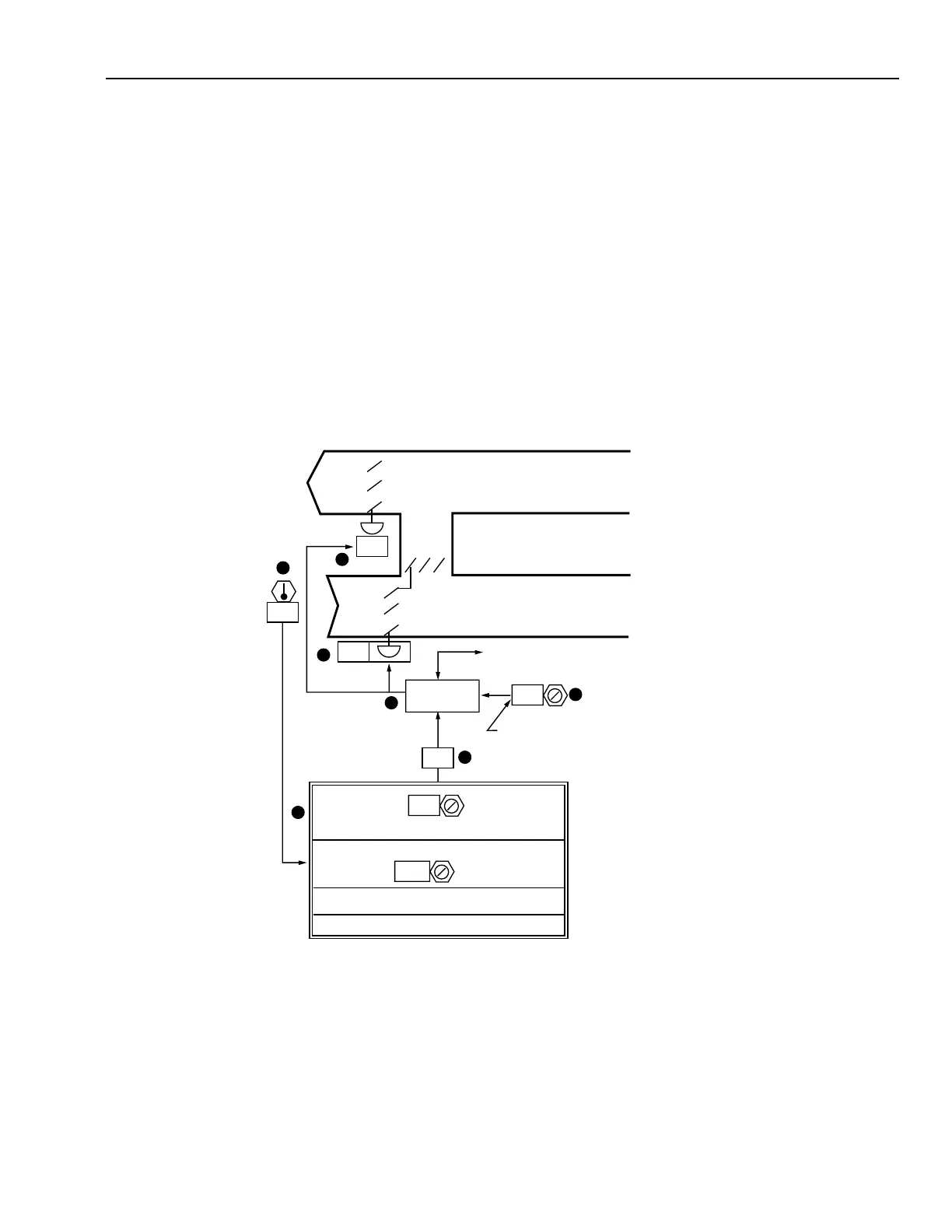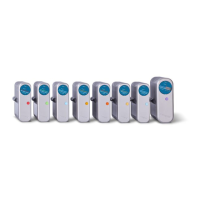ENGINEERING MANUAL OF AUTOMATIC CONTROL
AIR HANDLING SYSTEM CONTROL APPLICATIONS
215
ECONOMIZER CYCLE DECISION
Where 100% outdoor air economizer cycles are included with air
handling systems, the decision of when to switch to the economizer
mode is usually made automatically based upon the following criteria:
— The outdoor air conditions.
— The return air conditions or assumed conditions.
— The size and geographical location of the AHU.
— Cost.
— The users ability to understand control strategy and maintain
the humidity sensors.
The economizer decision does not enable or disable chiller periods
of operation. Chillers are generally enabled anytime chilled water valves
Item
No. Function
1 OA sensor senses OA temperature.
2 Economizer decision mode selector, including OA
temperature setpoint below which the economizer
decision is invoked, and command options.
3 Economizer decision status (operator information).
4 Setpoint for minimum OA damper position.
5 Actuator positions OA and RA dampers.
6 Actuator positions EA dampers.
7 Control program coordinates occupancy,
temperature, smoke, and ventilation controls.
9
OA
MA
RA
EA
22
1
22
ON
ECONOMIZER MODE SELECTOR
OA MINIMUM SETPOINT
(NOTE: THE TEST AND BALANCE INITIAL
VALUE FOR PROPER VENTILATION IS 22)
OTHER INPUTS AND OUTPUTS
M15154
2
7
3
1
4
83
6
5
83
CONTROL
PROGRAM
1 = AUTO BASED UPON OA DB
BELOW DEGREES.
2 = MANUAL, ECONOMIZER ON.
3 = MANUAL, ECONOMIZER OFF.
ECONOMIZER
STATUS
open. At economizer changeover, the OA (containing less heat than
the RA) is intended to reduce the load on the cooling coil until no
chilled water is required.
The OA sensors should generally be located at least two meters
above the ground in the shade (north side) in a perforated enclosure
away from exhausts.
Following are several popular strategies with guidelines of when
each is appropriate.
ECONOMIZER CYCLE DECISION—OUTDOOR AIR DRY BULB CONTROL
Functional Description

